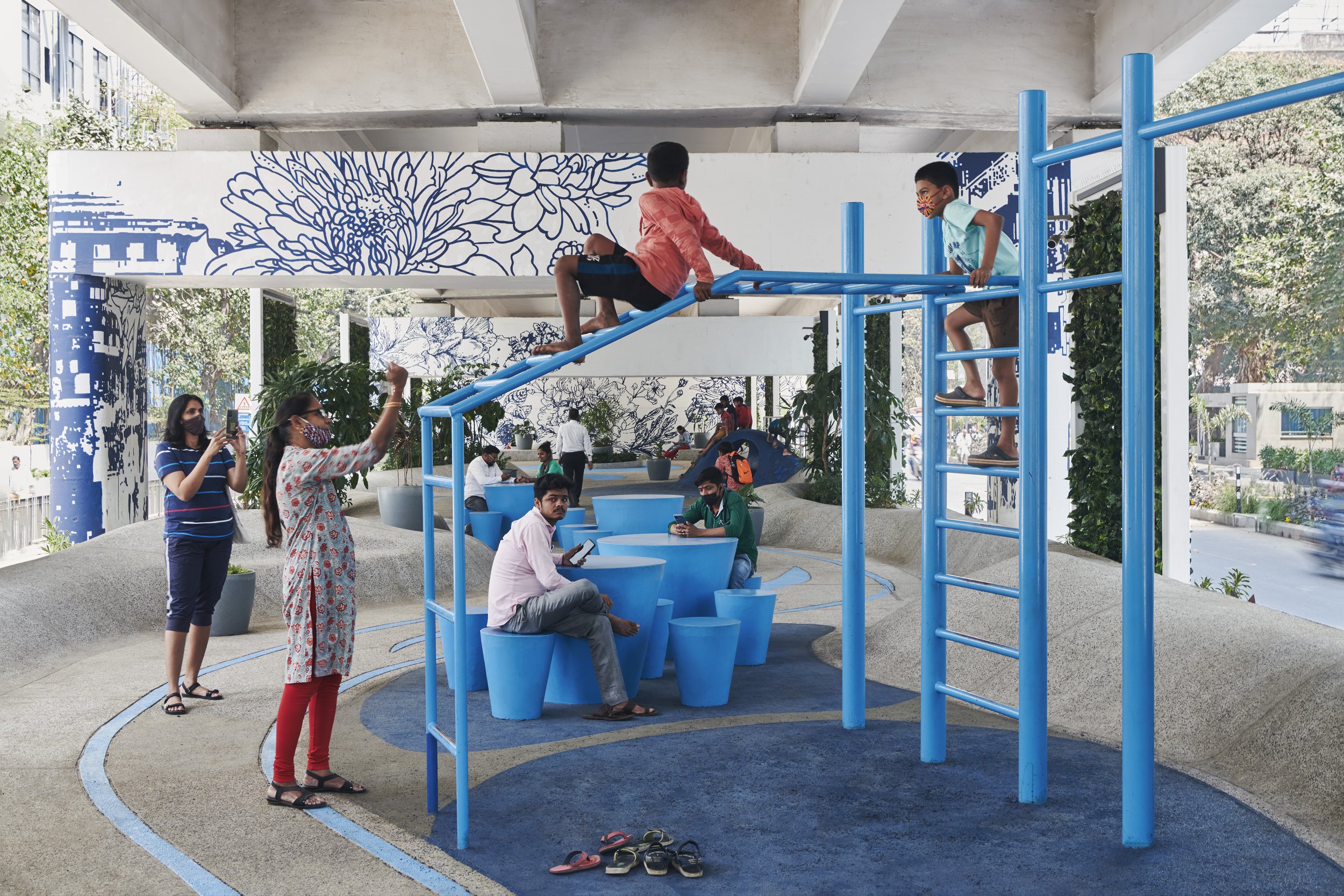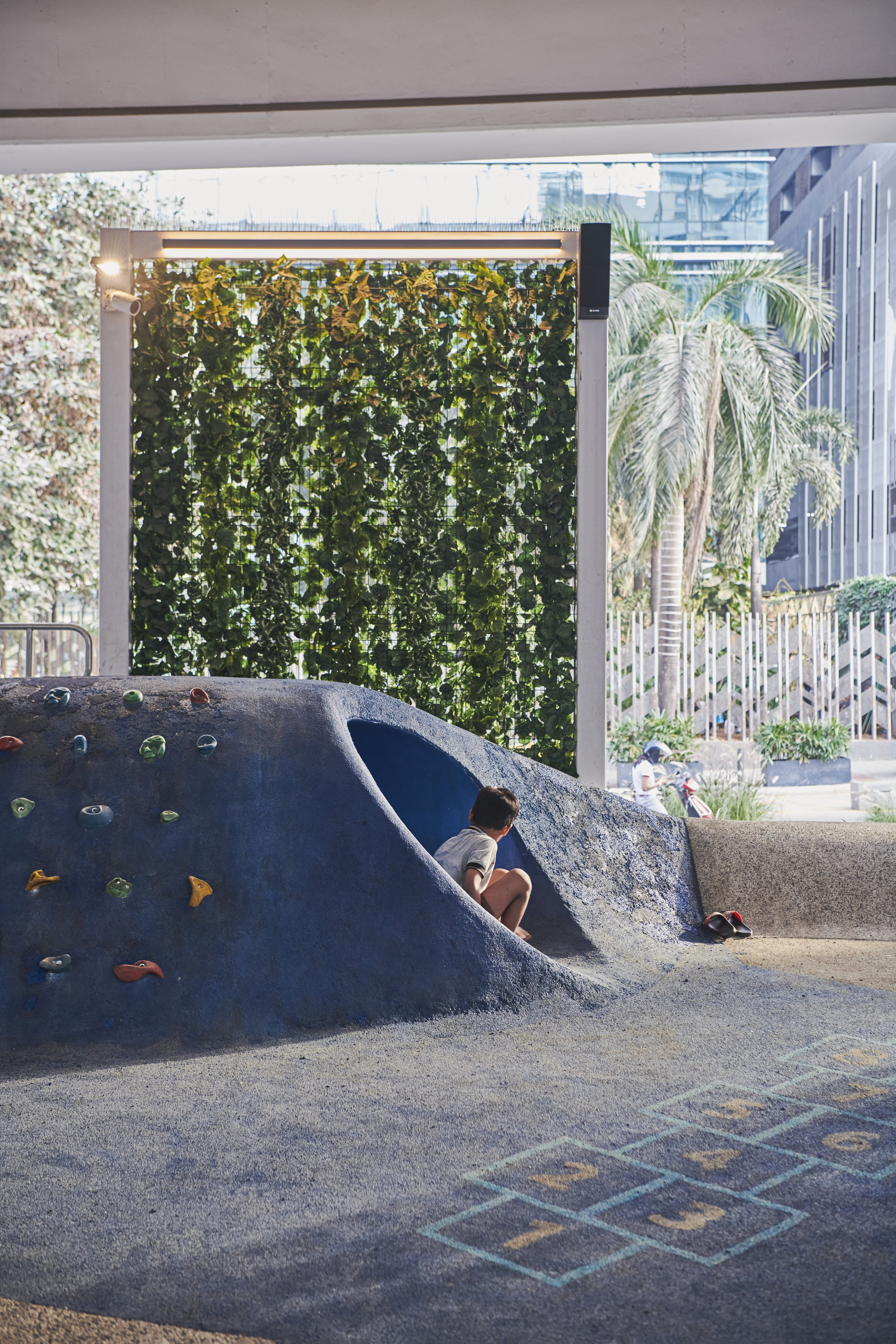One Green Mile - a haven under infrastructure
Turning an overbearing element of concrete infrastructure into a public space adds much-needed amenities and greenery for a community in the bustling metropolis of Mumbai, India.
Developed underneath an 800 metre stretch of the Senapati Bapat Marg flyover, the newly constructed One Green Mile creates a strong visual identity for the neighbourhood as well as improving mobility.
One Green Mile transforms a series of neglected spaces below Mumbai’s Senapati Bapat Marg flyover into a public space for the entire local community. All images © Suleiman Merchant
Dutch studio MVRDV collaborated with local architecture firm StudioPOD to transform the undulating landscape with inviting bright blue furniture and attractive planting.
The space is divided into a series of public “rooms” with diverse functions: lounge, gym, shaded seating area, performance space, and reading room. Greenery in the design – featured on a series of screens lining the space, an archway at the entrance, and in retaining walls and planters – promotes biodiversity, while cooling the surrounding spaces and dampening noise pollution.
Sinuous blue stripes extend the visual identity developed by architecture firm StudioPOD into all elements of the space.
“Perhaps one day we will see the end of noisy, unpleasant highways carving up our cities, but for now they are still unfortunately a necessary evil – one you can see in Mumbai more than most cities”, says MVRDV partner Stefan de Koning.
“One Green Mile asks the question: what if we expected highways to give something back to the places they cut through? A flyover can provide some shade in a hot city, and creates a small area of land that can’t be developed with tall buildings. It’s not such a crazy idea to make that into a public space.”
The design enhances connections for pedestrians and cyclists to make the area more comfortable and accessible. Paving, bicycle paths, and bright, large-scale zebra crossings promote access and safety. It improves accessibility with the incorporation of an uninterrupted mobility network and mobility hub to stimulate cycling. The area’s lighting concept works alongside programmatic elements and urban furniture features to make a recognisable place, and ensure safety around the clock.
Lighting makes it a safer space around the clock.
The project exemplifies a circular economy approach; by utilising the space underneath, the flyover itself increases in value; in addition to transporting cars, it acquires a new purpose as a sheltered, occupied public space.
Engineering features store and filter monsoon water to irrigate One Green Mile’s extensive network of plants. With its focus on shaded and inclusive green public spaces, the One Green Mile concept can easily be repeated elsewhere in the city, de Koning says.
Greenery – seen here climbing one of a series of screens lining the space – promotes biodiversity, while cooling the surrounding spaces and dampening noise pollution.
For the current project, a planned future extension will expand the revitalisation of public space to 3 kilometres of the flyover’s 11.22-kilometre total stretch, which extends from Mumbai’s Mahalaxmi racecourse to the Dharavi Mangrove Region.






